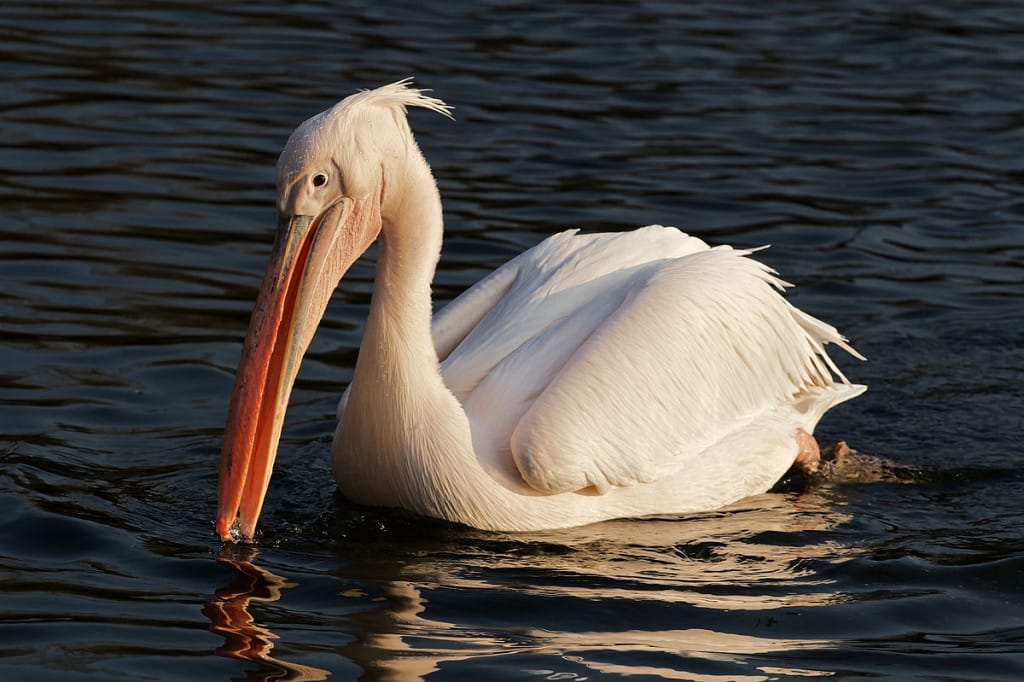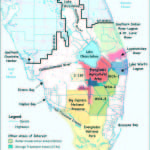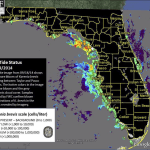Rare Great White Pelican, Found In Europe, Africa & Asia, Appears In “Ding” Darling, Sanibel Island!
Featured Image: Great White Pelican, Photo Credit – Dakoman
“Wintering locations for European pelicans are not exactly known but wintering birds may occur in northeastern Africa through Iraq to north India, with a particularly large number of breeders from Asia wintering around Pakistan.”
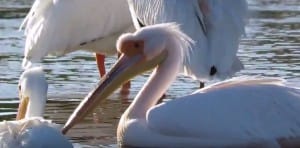
Rare Great White Pelican, Among Common White Pelicans, Sanibel, “Ding” Darling National Wildlife Refuge, March 2016.
A rare great white pelican, native to Western Europe and North Africa, has joined the common North American White Pelicans at “Ding” Darling!
Experts aren’t quite sure how and when the great white pelican arrived or where he/she came from, but it appears the pelican came a long, long way to winter over on Sanibel Island!
Here’s some background on great white pelicans.
“The great white pelican (Pelecanus onocrotalus) also known as the eastern white pelican, rosy pelican or white pelican is a bird in the pelican family.[2] It breeds from southeastern Europe through Asia and in Africa in swamps and shallow lakes.
The great white pelican is a huge bird, with only the Dalmatian pelican averaging larger amongst the pelicans. The wingspan can range from 226 to 360 cm (7.41 to 11.81 ft), with the latter measurement the largest recorded among extant flying animals outside of the great albatrosses.[3][4][5] The total length of the great white pelican can range from 140 to 180 cm (55 to 71 in), with the enormous bill comprising 28.9 to 47.1 cm (11.4 to 18.5 in) of that length.[5][6]
Adult males, weigh from 9 to 15 kg (20 to 33 lb), though large races from the Palaearctic are usually around 11 kg (24 lb) with few exceeding 13 kg (29 lb).[7] Females are considerably less bulky and heavy, weighing from 5.4 to 9 kg (12 to 20 lb).[5] Among standard measurements, the wing chord length is 60 to 73 cm (24 to 29 in), the tail is 16 to 21 cm (6.3 to 8.3 in) and the tarsus is 13 to 14.9 cm (5.1 to 5.9 in). The standard measurements from differing areas indicate that pelicans of the species from the Western Palaearctic are somewhat larger in size than ones that reside in Asia and in Africa.
Great white pelicans are usually birds found in and around shallow, (seasonally or tropical) warm fresh water. Well scattered groups of breeding pelicans occur through Eurasia from the eastern Mediterranean to Vietnam.[5] In Eurasia, fresh or brackish waters may be inhabited and the pelicans may be found in lakes, deltas, lagoons and marshes, usually with dense reed beds nearby for nesting purposes.[5] Additionally, sedentary populations are found year-round in Africa, south of the Sahara Desert although these are patchy.
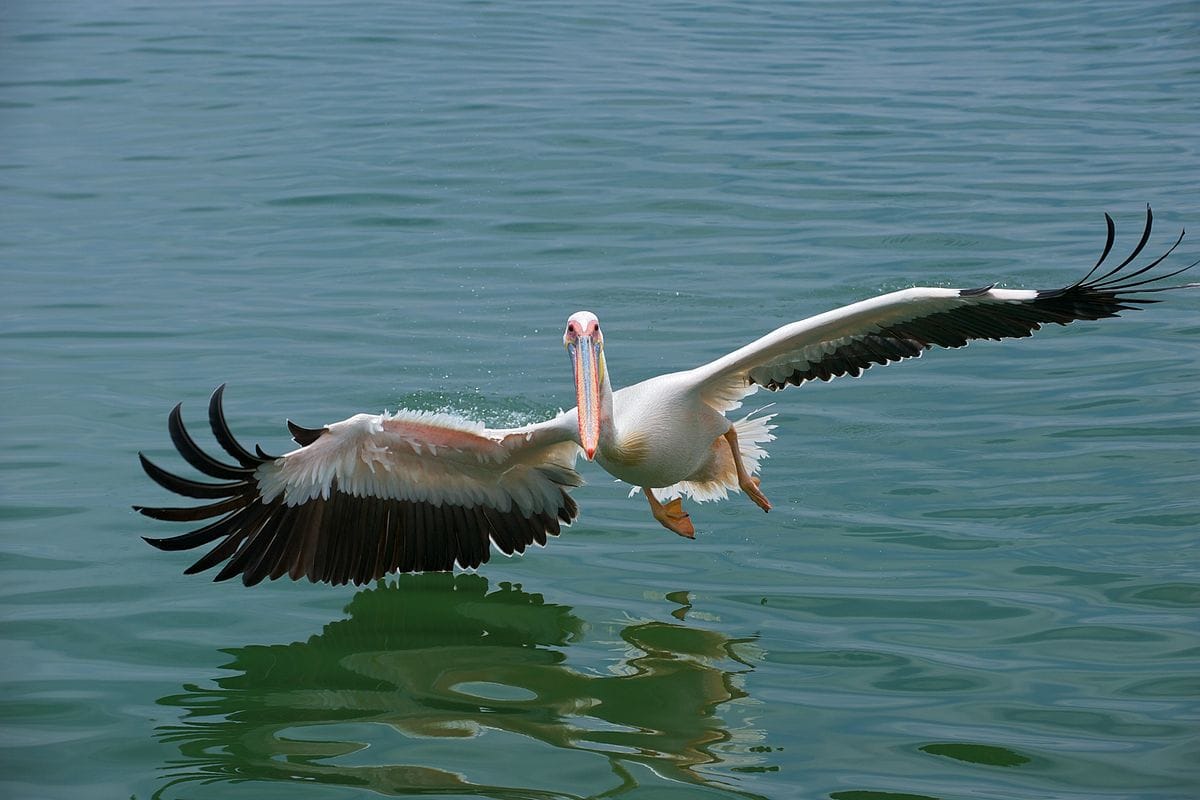
In Africa, great white pelicans occur mainly around freshwater and alkaline lakes and may also be found in coastal, estuarine areas.[9]Beyond reed beds, African pelicans have nested on inselbergs and flat inshore islands off of Banc d’Arguin National Park.[5] Migratory populations are found from Eastern Europe to Kazakhstan during the breeding season. More than 50% of Eurasian great white pelicans breed in the Danube Delta in Romania. They like to stay also in the Lakes near Burgas, Bulgaria and in Srebarna Lake in Bulgaria. The pelicans arrive in the Danube in late March or early April and depart after breeding from September to late November.[5] Wintering locations for European pelicans are not exactly known but wintering birds may occur in northeastern Africa through Iraq to north India, with a particularly large number of breeders from Asia wintering around Pakistan.[5] These are birds that are found mostly in lowlands, though in East Africa and Nepal may be found living at elevations of up to 1,372 m (4,501 ft).[5]
Source: Great White Pelican.

